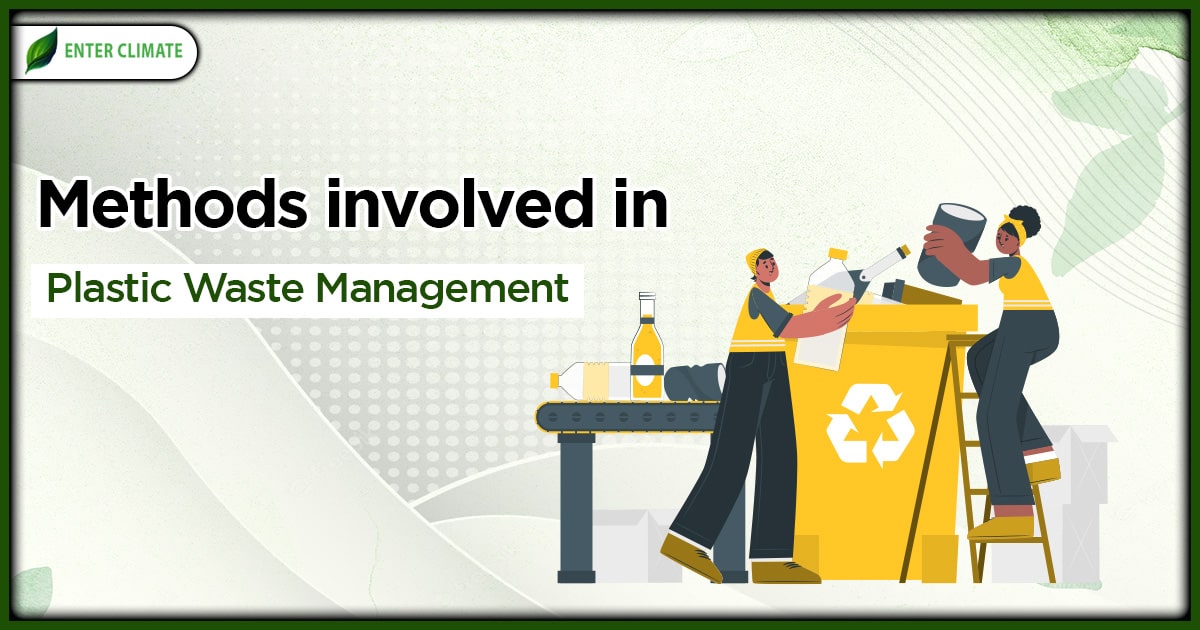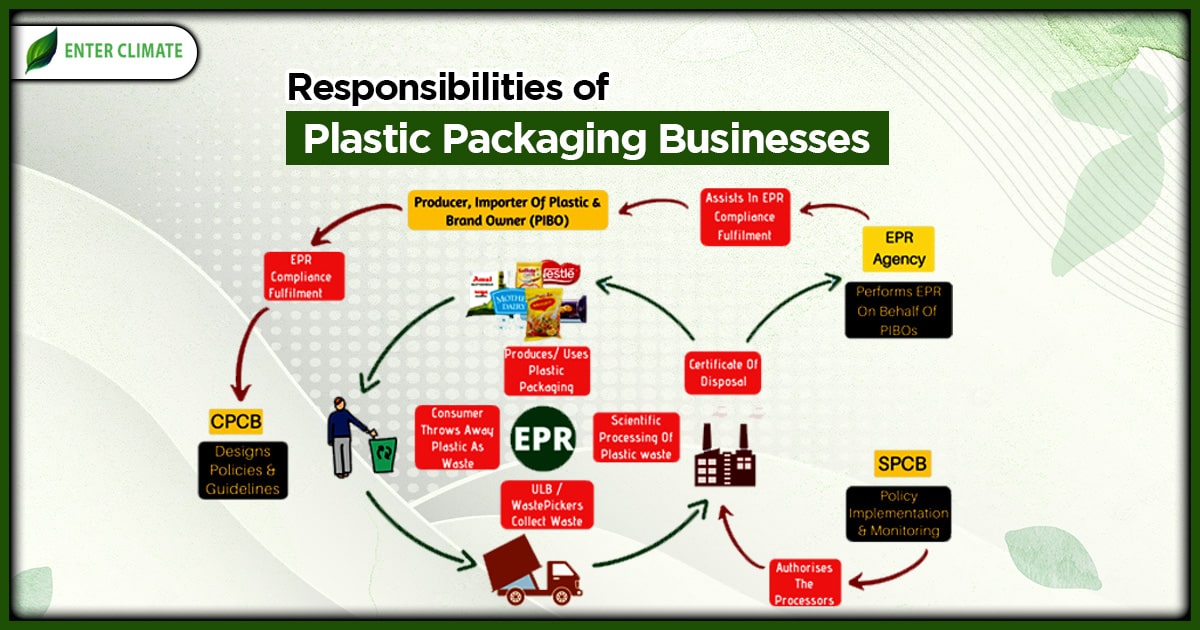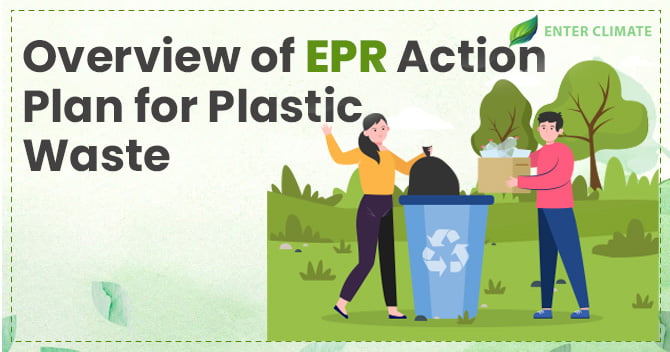Methods Involved in Plastic Waste Management
 22 Sep, 2023
22 Sep, 2023 
Searching for ways to manage plastic waste along with its methods? Plastic waste, also known as plastic pollution, is “the accumulation of plastic objects” (such as plastic bottles and other items) in the environment of the Earth that negatively impacts humans, animals, and their habitats. Various methods are used to dispose of plastic waste, including recycling, disposal in landfills, incineration, microbial degradation, and conversion into valuable materials. One of the materials that cause harm to the environment is plastic. The environment deteriorates, which is a result of materials which are produced and destroyed going out of balance. A large amount of plastic is produced and released into the environment, which takes a longer duration to degrade. It is crucial to address the serious problem of plastic waste management on a global scale. However, there are steps we can take to slow the growth of the plastic tsunami and some tips for lowering plastic waste.
Causes of Plastic Waste
- Plastic is one of the most widely used as well as inexpensive, and it can be easily accessible.
- Demand for plastic increases as the population increases, which results in using more plastic than the requirement
- Food and drink containers, carrier bags, straws, and water bottles are popular examples that have very short life spans. The cost is very little, so it is valued at less.
- There is an issue of frequent mismanagement of plastic during the time of disposal, and it ends up in landfills.
- The decomposition of plastic is time taking takes around 50-600 years
Method used for Plastic Waste Management
The significant problem of plastic waste management and its contamination has been brought to light by the unchecked use of plastics for various purposes, including agriculture, industry, transportation, and packaging in urban and rural areas. The three most popular methods for getting rid of plastic are recycling, incineration, and landfill; each has pros and cons.
Recycling
The opportunity to create a new product using recycled plastics is provided by recycling. Recycling is considered the best option in the hierarchy of solid waste administration for minimizing the effects of post-consumer plastic packaging waste at their end of use and life.
Recycling is a readily available and significant action in the plastics industry to lessen the impact of plastics. Recycling can reduce the amount of waste that needs to be disposed of, as well as CO2 emissions and oil use. Utilizing recovered plastics from recycling gives rise to the possibility of creating a new product. Additionally, there have been rapid advancements in the reuse of packaging materials have occurred recently in several nations. The amount of recycled plastics, which was first produced in the 1970s, varies geographically and by plastic type and application.
Incineration
Another standard method for plastic waste management is incinerating it. In terms of energy recovery in the form of heat, plastic incineration is advantageous and requires very little space.
Waste incineration, to put it simply, is the process of turning waste into ash, flue gas, and heat. The ash, which can take the form of solid lumps or tiny particles carried by the flue gas, primarily comprises inorganic waste components. Before being released into the atmosphere, the flue gases, which are surplus gas byproducts of incineration, should be cleared of particulate and gaseous pollutants. The heat produced during the process can be used to generate electricity, among other things.
Landfill
The term “landfill” refers to all locations and regions where we discard all disposable plastic waste after utilization before being buried beneath the surface of the Earth. The purpose of the landfill arrangement is to provide a safer area for the disposal of plastic waste to safeguard the environment in all its forms. To accomplish the aforementioned goals. It necessitates a lot of work on the part of the community, such as digging a deep hole or dumping in it, filling it with waste, and allowing it to decompose.
The main drawback of disposing of plastic waste is that landfills take up space that could be used for more profitable activities, like agriculture. This is made worse by the fact that most plastics only moderately degrade, which implies that the contaminated land will remain inaccessible for a long time.
Legality vis-à-vis Plastic Waste Management
Plastic waste management rules 2016
- Adding the duties of producers and generators to the system for managing plastic waste, as well as introducing a system for producers and brand owners to collect back plastic waste by extending producers’ responsibility
- To establish a system for collecting fees for plastic waste management by requiring producers, importers, and sellers of plastic carry bags and multilayered packaging to pre-register
- To encourage plastic waste management for road construction by Indian Road Congress guidelines, or energy recovery, waste to oil, etc., for profitable waste utilization while also addressing the problem of waste disposal; to place more responsibility on waste generators, including payment of user fees as set forth by the local authority, collection, and delivery of waste by the institutional generator, and event organizers.
Plastic Waste Management Amendment Rules 2022
- Extended Producer Responsibility Certificates: The guidelines permit the sale and purchase of extra extended producer responsibility certificates. This will establish a market mechanism for the management of plastic waste.
- State Pollution Control Boards (SPCBs) are responsible for reporting to the CPCB annually how producers, importers, brand owners, and processors of plastic waste in the state and union territory have complied with the EPR.
- The rules also aim to encourage people to behave responsibly, adapt, and participate in waste management.
Plastic Waste Management Amendment Rules 2023
The Plastic Waste Management (Amendment) Rules, 2023, were published by the Central Government[1] in a notification dated April 27, 2023. The registration granted under this rule shall be changed only at the request of Producers, Importers, and brand owners under the existing Extended Producer Responsibility registration. The registration granted by this rule is valid for one year unless it is revoked, suspended, or cancelled and is then granted for three years. To register, an entity must provide a PAN number, a GST number, a CIN number in the case of a company, an Aadhar number, the PAN number of an authorized person or representative, and any other information that may be necessary.
Plastic waste management vis-a-vis conversion of plastic into valuable products
- Plastic waste management helps in turning waste plastic into useful building materials. With the help of an extruder, environmental pollution brought on by plastic waste can be further reduced.
- Retaining blocks, paving slabs, railway sleepers, roof tiles, interlocks, and other useful building materials are currently made from waste plastics using either a single origin of waste plastic material or a mixture of different waste plastics and rubber powder waste as a filler.
- Waste plastics combined with calcium carbonate and rubber powder provide the highest compressive strength and can withstand heavy compression.
Plastic Waste Management in the Healthcare Sector
- Plastics are extensively used in hospitals. Glucose bottles, I.V. sets, disposable syringes, B.T. sets, cannulas, catheters, etc., and disposable plastic aprons are all part of the daily production of plastic waste.
- Plastics may be practical and simple to use daily, but we cannot ignore their detrimental effects on our health. Due to their non-biodegradable nature, plastics continue to be discarded globally and contribute significantly to trash production.
- Plastic waste management has also helped healthcare facilities around the world produce a sizable amount of non-infected plastic waste. Only a small portion is recycled, though. Typically, used plastics are either dumped in landfills or incinerated insufficiently. These actions harm the environment. Due to their high versatility, plastics are an essential component of the medical industry.
- The challenges of sorting or cleaning largely constrain the recycling of medical plastic. Only when the healthcare sector and recycling industries are properly coordinated can medical plastic waste be recycled. It is important to adopt new recycling technologies sustainably.
- Additionally, the plastics used in medical applications ought to be made so that they can be recycled. Following collection, sorting, and cleaning of the plastic waste, there are typically four standard routes for recycling plastic.
- Primary recycling – It speaks of the recycling of plastic waste into products that share many traits with the original material.
- Secondary recycling- The mechanical recovery of plastic waste is also called mechanical recycling. Collection, sorting, and washing of the material to remove organic or other contaminants are all steps in the mechanical recycling process.
- Tertiary recycling- transforms plastic materials into smaller molecules, typically gases or liquids, that are used as the feedstock in a process that produces chemicals and fuels.
- Quaternary recycling- With the aid of incineration, this technique significantly reduces the amount of waste produced. When wastes are too contaminated to be recycled normally, this method is typically used.
Difficulties in the management of Plastics waste from the Healthcare Sector
Various medical plastics are contaminated by blood or other bodily fluids and make up a significant portion of the waste generated by the medical industry. The reason why medical plastic should not be recycled is because of infection, which is a major concern. To stop spreading infection through medical waste, it should be disinfected at the source. Various sterilization techniques could be used to remove this issue. Effective recycling should be performed to have effective recycling.
Plastic waste management and biodegradation
Biodegradation is the most effective, efficient, and environmentally responsible method of disposing of plastic waste. The biodegradation of plastic waste refers to the process by which microorganisms break down plastic material into simpler substances, such as water, carbon dioxide, and biomass.
Key points about biodegradation of plastic waste
- Biodegradation primarily occurs through the action of microorganisms, including bacteria, fungi, and certain enzymes produced by them. These microorganisms secrete enzymes that can break the chemical bond into plastics.
- The rate of biodegradation is influenced by environmental factors such as temperature, humidity, oxygen level, and the presence of microorganisms.
- Not all plastics biodegrade at the same rate or to the same extent. Biodegradability depends on the type of plastic and chemical composition.
- Plastics labelled as “biodegradable” are typically engineered to break down more rapidly than conventional plastics under specific environmental conditions.
Process involved in plastic waste management vis-à-vis biodegradation
- Recognition – Microorganisms identify plastic material as potential food sources through various methods
- Secretion of enzymes – Once attached to the plastic, microorganisms secrete enzymes, which are biological molecules that catalyze a chemical reaction
- Chemical breakdown – enzymes break the long chain of polymers in plastic into smaller molecule
- Metabolism – the microorganism further metabolizes the smaller plastic-derived molecules into an even simpler substance.
- Release of byproducts – the microorganisms further metabolize the plastic they release byproducts, such as water, CO2, and biomass
- Complete biodegradation – microorganisms continue to break down plastic until very little or none of the original plastic material remains
Plastic waste management and Chemicals
Some of the chemicals used in the production of plastics can irritate human skin and result in dermatitis. Humans may become contaminated by plastic, which could leave them unable to enjoy nature due to an eyesore.
Process involved in plastic waste management vis-à-vis Chemicals
- Mechanical Sorting – Waste plastic is frequently mechanically sorted before being subjected to chemical processes. To do this, plastics are separated from other materials like paper, glass, and metals using sieving and shredding processes.
- Chemical Recycling – Chemical recycling is a process that disassembles plastics into their chemical constituents or transforms them into useful products. It is also referred to as advanced recycling or feedstock recycling. There are several techniques for recycling chemicals.
- Pyrolysis – In the absence of oxygen, heat transforms plastics into hydrocarbon gases, liquids, or solids. These can serve as fuels or as raw materials for fresh plastics.
- Gasification – Syngas (synthesis gas) is created by heating plastics in a controlled environment with oxygen and/or steam. Syngas can be used to produce energy or chemicals.
- Depolymerization – When plastics are chemically broken down into their monomers, new plastics can be created.
- Plastic to Fuel Conversion – Using thermal or catalytic cracking, certain chemical reactions turn plastics into liquid fuels like gasoline or diesel.
- Chemical Modification – Plastics can be chemically altered to alter their characteristics or increase their biodegradability. For instance, adding enzymes or catalysts can speed up the biodegradation process.
- Chemical Degradation – In controlled environments, chemical processes can be used to hasten the degradation of plastics. This helps manage some plastic waste, particularly when biodegradation is sluggish.
- Polymer Blending – Combining various plastic types can enhance their characteristics and recyclability. Compatible plastics can be combined using chemical processes.
- Chemical Stabilization – Plastics can occasionally be strengthened and made more resistant to environmental deterioration by adding additives and stabilizers.
- Solvent-based Processes – Some plastics can be dissolved in appropriate solvents to separate them from other waste stream components. This might make recycling easier.
- Plasma Treatment -Plasma, a highly energetic state of matter, can change the surface characteristics of plastics, making them better suited to recycling and other uses.
- Biodegradable Additives – Some plastics have additives built into their design that encourage biodegradation. When exposed to certain environmental factors, these additives can start chemical reactions that degrade the plastic.
Conclusion
In light of the aforementioned studies, plastics have evolved into a necessary element of modern life and are used in various applications, including consumer goods, building materials, packaging, and much more. Three hundred million tons of plastic are produced worldwide each year. In nature, plastics typically have a very long shelf life, are inert, and are immune to microbial attack. An essential source of natural contamination that might be dangerous to life is the improper disposal of plastic materials.
FAQs
Recycling is considered the best option in the hierarchy of solid waste administration for minimizing the effects of post-consumer plastic packaging waste at their end of use and life. The opportunity to create a new product using recycled plastics is provided by recycling. Recycling is a readily available and significant action in the plastics industry to lessen the impact of plastics. Recycling can reduce the amount of waste that needs to be disposed of, as well as CO2 emissions and oil use.
The ‘6 Rs’ are Reduce, Reuse, Recycle, Refuse, Rethink and Repair
The four fundamental approaches to waste management are
· Recycling
· Composting
· Landfills
· Burning of waste materials.
Four types of waste are
· Solid wastes
· Liquid wastes
· Organic wastes
· Hazardous wastes
Read our Article: Influencing Factors In Plastic Waste Generation













